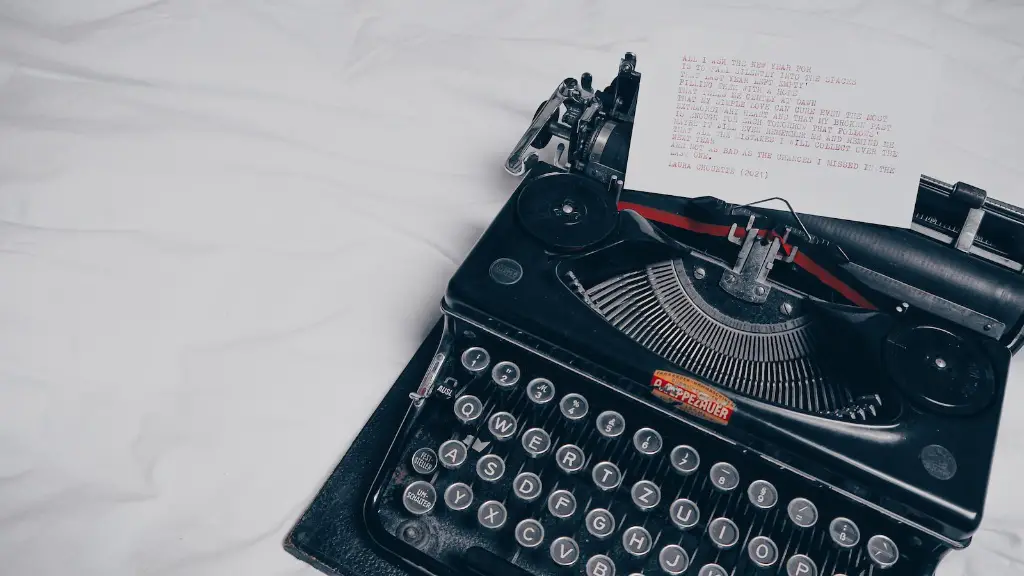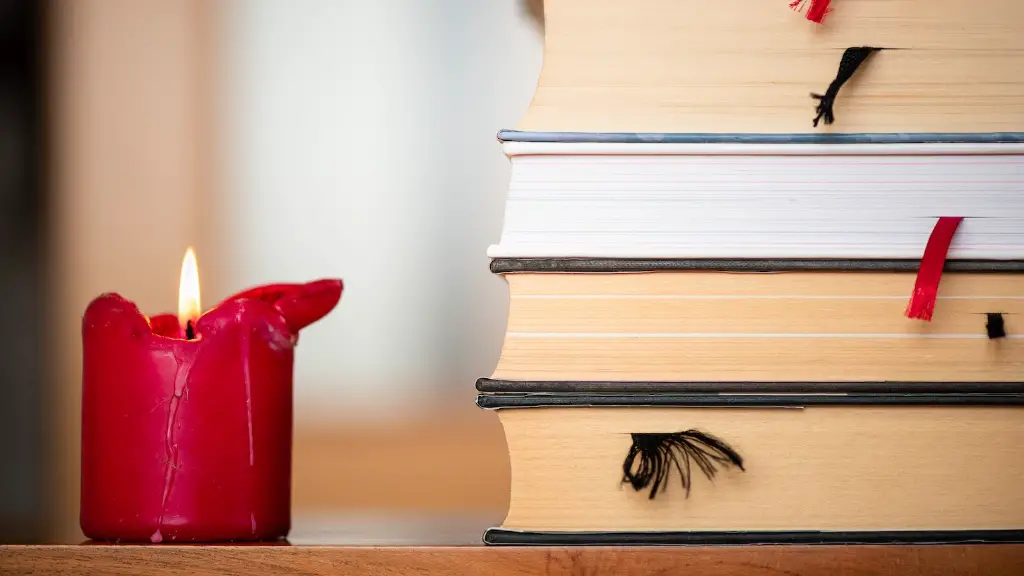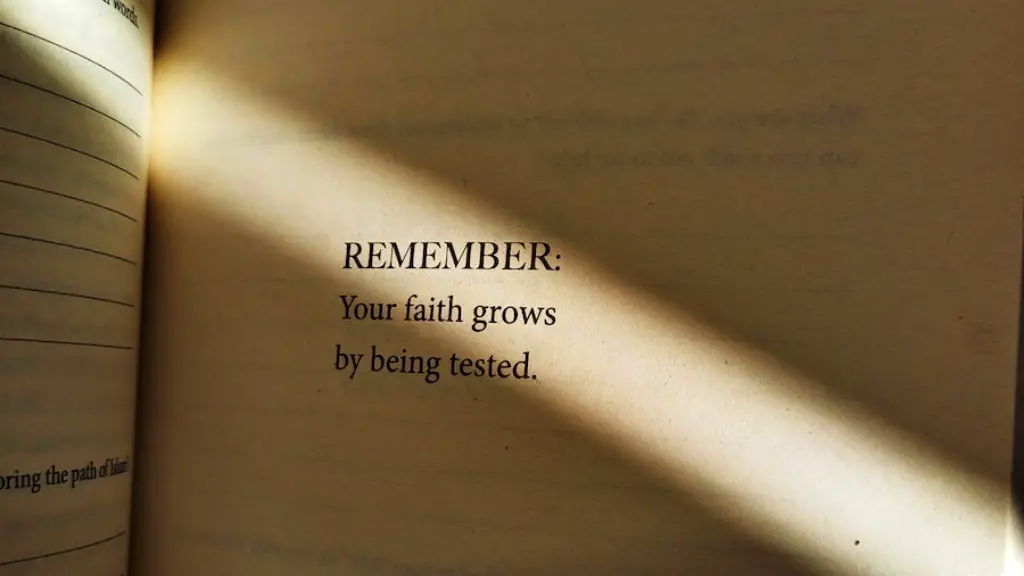Nonsense poetry is a genre of literature that uses sounds, words, and imagery to create humorous, humorous and often surreal effects. It has been used by some of the greatest poets, including Lewis Carroll and Edward Lear. This type of poetic writing has a unique charm because its language is often nonsensical and its visuals are often absurd. In this article we will explore the characteristics of nonsense poetry that has made it such a beloved genre.
Interweaving of Varying Textures
Nonsense poetry often incorporates multiple rhyme schemes, alliteration, and unusual sets of words that freely mix together to create an imaginative, meditative experience. These different textures are woven together in unexpected ways, allowing the poet to challenge the boundaries of what is considered traditional writing. For example, in Lewis Carroll’s classic poem “The Lobster Quadrille,” he creates a whimsical, musical dream world full of talking animals, by interweaving multiple lyrical styles and strange, humorous turns of phrase.
Capturing the Uncertainties of Life
The world is often confusing and unpredictable, and nonsense poetry captures this elusiveness by playing with language and ideas that often don’t make logical sense. This technique allows poets to express the ambiguities and uncertainties of life in an amusing and often light-hearted way. Edward Lear’s “The Owl and the Pussycat” is a great example of a nonsense poem that captures this sense of enigma in its language and imagery.
Using the Power of Imagination
Nonsense poetry, as a genre, is often defined by its reliance on the power of the imagination. Rather than providing clear, linear images, most nonsense poems are designed to invoke an imaginative response from the reader. They require the reader to make sense of their often nonsensical and surrealistic imagery, suggesting multiple interpretations and allowing for a journey of discovery. Through this process, readers can delve deep into the hidden meanings of the poem and discover a wealth of unexplored insights.
Breaking Limitations of Language
Language is an incredibly powerful tool that can be used to express a multitude of ideas and feelings. But some feelings and images simply cannot be put into words. Nonsense poetry provides an opportunity to explore these abstracts ideas and emotions within language, while also breaking the limitations of language itself.
Combining Logic and Illogic
Nonsense poetry often fuses both logical and illogical elements together to create unique, surreal effects. Most nonsense poets are able to mix the absurd with the sensible to express the mysteries of life. Carroll’s poem “Jabberwocky” is a great example of a poem that combines logic and illogic to convey an enigmatic yet humorous experience.
A World of Possibilities
Nonsense poetry opens up a world of possibilities for both the poet and the reader. It provides a space for the poet to explore the boundaries of language and create a unique, imaginative work of art. It also provides the reader with an opportunity to make sense of the nonsensical and uncover insights from the poem’s depths.
Encouraging Poetic Self-Expression
Nonsense poetry encourages poetic self-expression in a way that traditional poetry often does not. The genre allows for the use of playful language and imagery that can express different ideas, feelings and thought processes in an interesting and unique way. It also provides writers with an opportunity to explore the boundaries of language with their unique style and perspective.
Creative Use of Satire and Humour
Nonsense poetry often makes use of satire and humour in its language and imagery. It often relies on irony and wordplay to create clever, amusing effects. Humour is a great way to engage readers and also offers a way to explore dark and difficult topics in a more palatable way. Edward Lear’s “The Jumblies” is a great example of a poem that incorporates humour and satire in its narrative.
Creating New Realities
One of the great things about nonsense poetry is that it can be used to create completely new realities. It offers poets an opportunity to dream up their own imaginary worlds and explore them in an imaginative way. Through their wild stories and amusing characters, nonsense poets can bring a sense of lightness and fun to their readers.
What Can We Learn From Nonsense Poetry?
Nonsense poetry is a unique genre that has been beloved by entertainers, academics, and readers alike for centuries. Through the playful use of language and the exploration of the boundaries of traditional writing, this type of poetic writing has provided us with a tantalizing set of possibilities for creative expression. It also offers readers a chance to explore the depths of language and make sense of the often nonsensical elements of life.
Encouraging Creative Exploration
Nonsense poetry encourages us to explore the boundaries of writing and create new realities. By removing the confines of traditional writing and allowing for the use of humour and wordplay, nonsense poetry allows us to express our creative thoughts and feelings in an accessible and humorous way. It also enables us to explore topics that may be too difficult or sensitive to explore in a straightforward manner.
A Source of Existential Reflection
Nonsense poetry also provides us with a source of existential reflection that can help us make sense of our unique experience of life. By articulating the absurdities and uncertainties of our existence through its unique, playful style of writing, nonsense poets can open up our minds to new possibilities and offer us insight into the quirky and enigmatic qualities of our existence.
Playing With Language
Nonsense poetry is playful and open-ended, allowing poets to explore the limits of language and create their own blasphemous wordplay. By breaking the rules of grammar and creating bizarre and outlandish metaphors, nonsense poets offer us a chance to push the boundaries of language and experience the world in a new and exciting way.
Unlocking Hidden Meanings
By combining nonsensical visuals and sound effects with more recognisable elements of language and imagery, nonsense poetry can create an experience that is both mysterious and meaningful. By unlocking the hidden meanings of its often surreal compositions, nonsense poetry can help us make sense of our lives and better understand the often inexplicable aspects of our existence.



